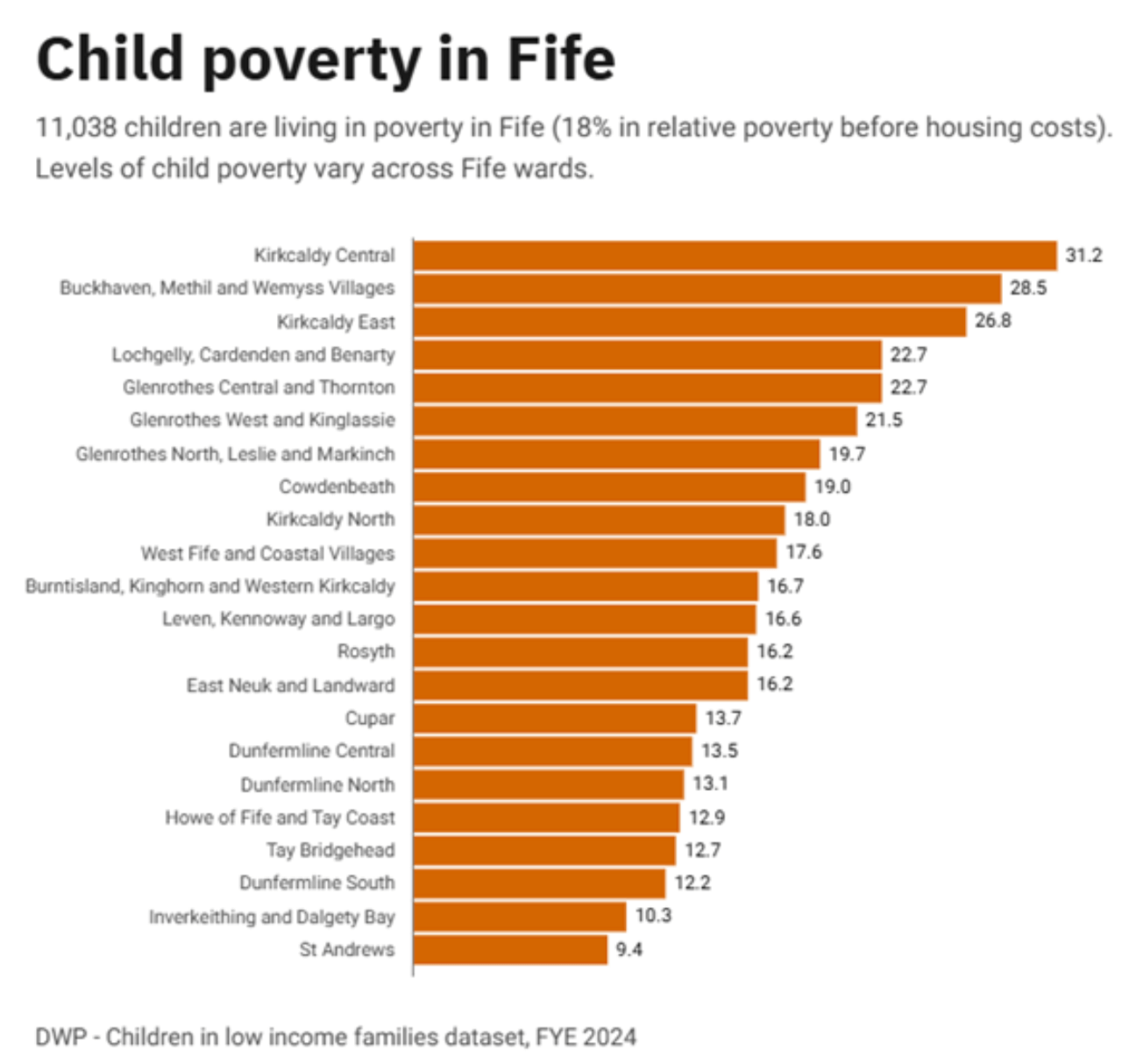Please see below the SWAY newsletter giving an update of the recent TPPC Board. The Board was updated on the work to provide early support to those who are applying to the Scottish Welfare Fund as well as work to improve access to household good and furniture for low-income households including discussion on option to establish a furnished tenancy scheme in Fife.
https://sway.cloud.microsoft/IiUR8D0K5ZSEDxUv?ref=Link
A welcome for The UK Government’s commitment to multi-year funding
SCVO response to UK Government Spending Review - SCVO
£240 million of capital from 2026-27 to 2029-30 will be put into local projects across the UK with Kirkcaldy being named as one of the 350 places to receive funding.
Kirkcaldy to receive funding boost in spending review | The Herald
These figures show that 25% (17,166) children in Fife, are living in relative poverty after housing costs. This is just above the Scotland rate of 23% but below the UK rate of 31%, showing that devolved policies such as the Scottish Child Payment have contributed to overall lower levels of Scotland.
In two-thirds of parliamentary constituencies, at least one in four children are in relative poverty after housing costs. Child poverty is highest in Glenrothes and Mid Fife (30.1%) and Cowdenbeath and Kirkcaldy (27.3%) and lowest in Dunfermline and Dollar (21.2%) and North East Fife (21.4%) parliamentary constituencies.
Local level child poverty rates are directly and strongly correlated with the percentage of children affected by the two-child limit - providing further evidence that the policy is a key driver of child poverty, actively contributing to higher child poverty rates in some parts of Fife. Data published in 2024 by the End Child Poverty Coalition on the number of children impacted by the two-child limit highlighted that 6,760 children (9%) in Fife are affected by the two-child limit, in line with Scotland. 2,460 children (14%) are affected in Glenrothes and Mid-Fife, 1,990 (10%) in Kirkcaldy and Cowdenbeath, 1,550 (7%) in Dunfermline and West Fife, and 760 (6%) in North East Fife.
For detail on how child poverty varies across Fife, see latest findings from Children in low income families dataset (before housing costs)

Back in May, we highlighted a change to the home page of The Fife Benefit Checker so that we can better understand who is using the system.
Although the questions are not mandatory, we are pleased to see some of the data is now available. It would appear that the majority of users are members of the public self-serving for advice, but as expected, Welfare Support Assistants are the most frequent professional using the system, but they are closely followed by Fife Council Housing staff.
Members of the public are declaring they have mostly visited the Fife Benefit Checker via a link in social media, but this is very close to the figure for "recommended by a professional or organisation"
These two questions are not set to be mandatory answers, but we are hoping you will be able to help by answering this question every time you use the tool to help inform future campaign marketing strategies and better understand the usage rates.
This annual campaign has seen many Fife organisations promote their services and promote the value of those who are unpaid carers within our community. More information on the campaign can be found on the dedicated website Home | Carers Week,
Especially this week, if you are an unpaid carer, or know someone who is, please use the Fife Benefit Checker to ensure you are not missing out on any entitlements Cost of Living Support
As always, please get in touch with Sheena Watson or Audrey Whyte if you would like more information on any of this week’s content. We would also value any contributions you would like to make towards future editions.
Contact: Sheena Watson
Email: sheena.watson@fife.gov.uk